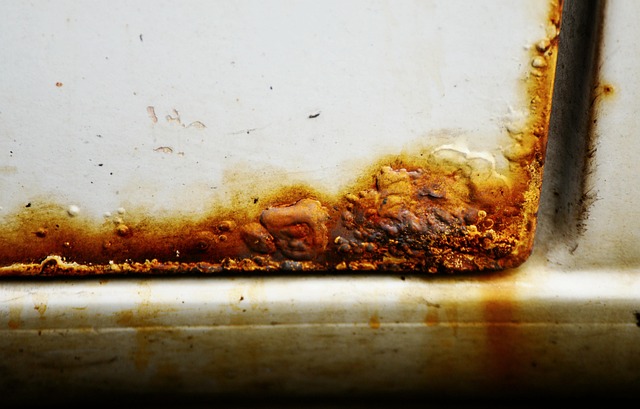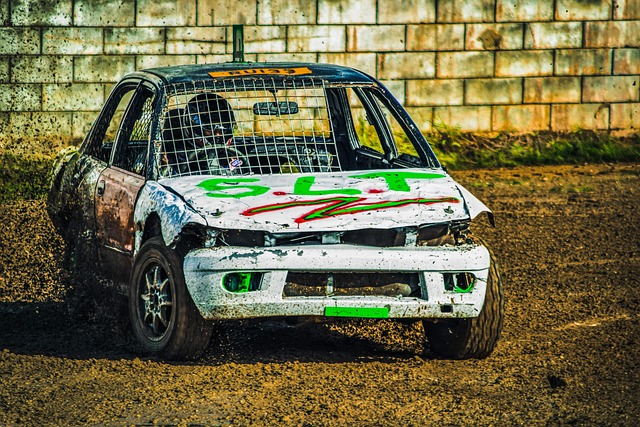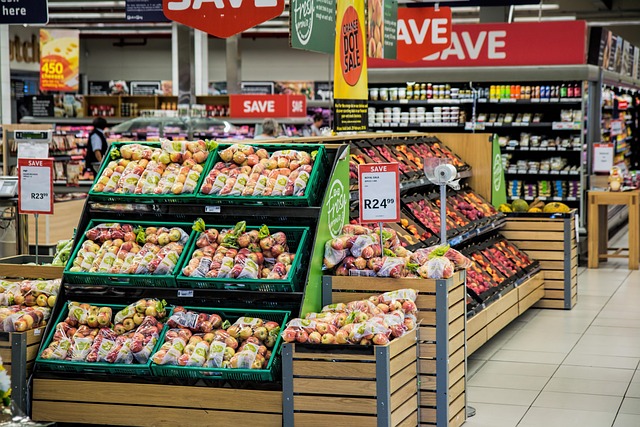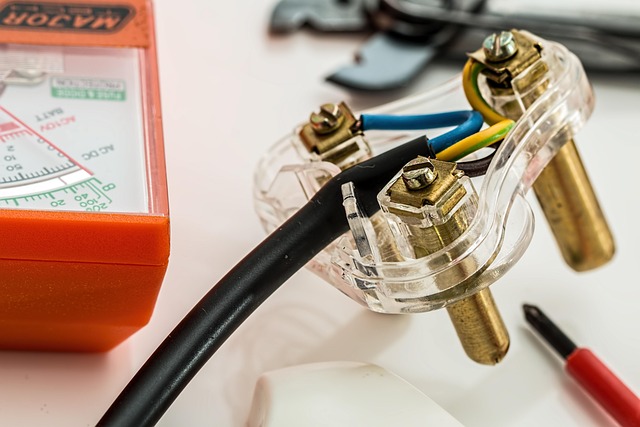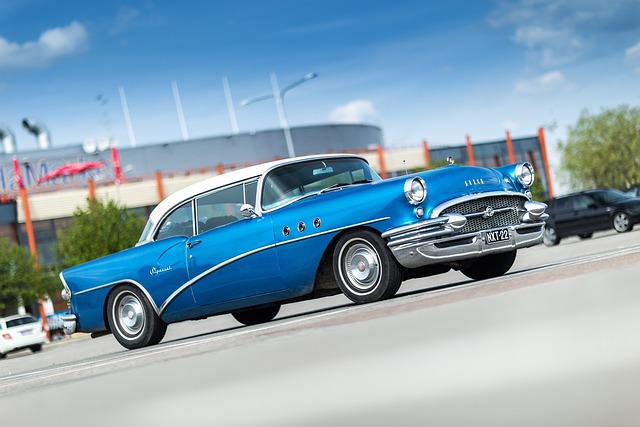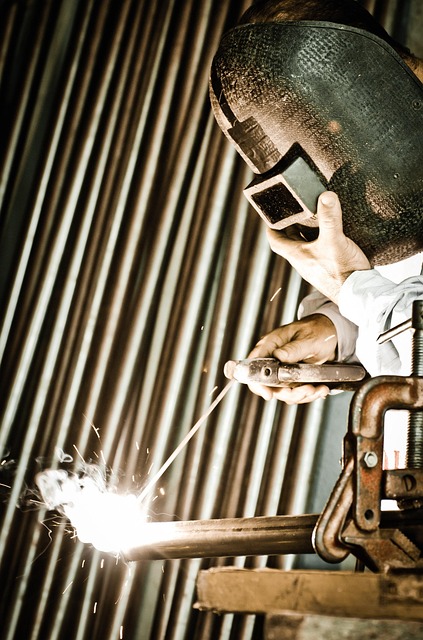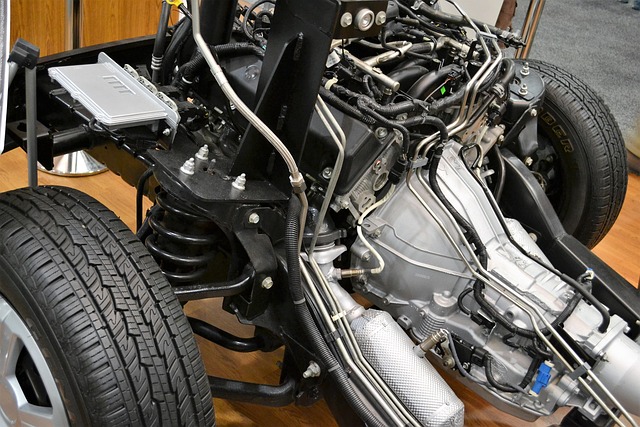Paint databases, acting as powerful digital tools, revolutionize computerized paint matching in industries like car dent and collision repair by providing extensive color, formulation, and historical data. These databases significantly enhance accuracy, leading to improved repair quality and customer satisfaction through efficient cross-referencing of damaged vehicle samples. The integration of these databases into algorithms has transformed auto body shops' color coordination, making repairs faster, more accurate, and successful. Utilization of paint databases offers enhanced accuracy and efficiency, expedites the painting process, reduces human error, and saves time, ultimately leading to faster repairs, consistent outcomes, and higher customer satisfaction. As technology advances, best practices include maintaining comprehensive data with high-quality images, detailed specifications, and up-to-date information, while future trends suggest increased use of artificial intelligence (AI) for improved accuracy in computerized paint matching.
Paint databases are revolutionizing computerized paint matching, enabling accurate color identification and comparison. This article explores their pivotal role in enhancing automotive refinish, industrial coatings, and design industries. We delve into the benefits of using paint databases for error-free matching, ensuring consistent results. Additionally, best practices and future trends in database management will be discussed to optimize computerized paint matching accuracy.
- Understanding Paint Databases and Their Role in Computerized Matching
- The Benefits of Using Paint Databases for Accurate Matching
- Best Practices and Future Trends in Paint Database Management for Computerized Matching Accuracy
Understanding Paint Databases and Their Role in Computerized Matching

Paint databases are comprehensive digital repositories that store vast amounts of information about various paint colors and formulations. They catalog color codes, shade variations, and even historical data on paint batches. These databases play a pivotal role in enhancing the accuracy of computerized paint matching processes, which are essential for industries such as car dent repair, auto collision repair, and bumper repair.
By leveraging these databases, computer systems can cross-reference and compare paint samples from damaged vehicles with available replacement paints more effectively. This ensures that the right color match is made, resulting in higher-quality repairs and increased customer satisfaction. The integration of paint databases into computerized matching algorithms has revolutionized how auto body shops handle color coordination, making processes faster, more precise, and ultimately, more successful.
The Benefits of Using Paint Databases for Accurate Matching

Using paint databases for computerized paint matching offers numerous benefits that significantly enhance the accuracy and efficiency of processes like vehicle restoration and car bodywork services. These databases serve as comprehensive repositories of paint color information, enabling detailed comparisons between different car bodies. By accessing a vast array of paint formulations and their corresponding attributes, computer algorithms can precisely match colors even with subtle variations.
This technology streamlines the painting process, reducing human error and the time typically spent on manual matching. For car bodywork services, it means faster repairs, more consistent outcomes, and enhanced customer satisfaction. Additionally, paint databases facilitate the tracking of color histories, which is crucial for maintaining the authenticity of vehicle restoration projects, ensuring that each car retains its original aesthetic integrity.
Best Practices and Future Trends in Paint Database Management for Computerized Matching Accuracy
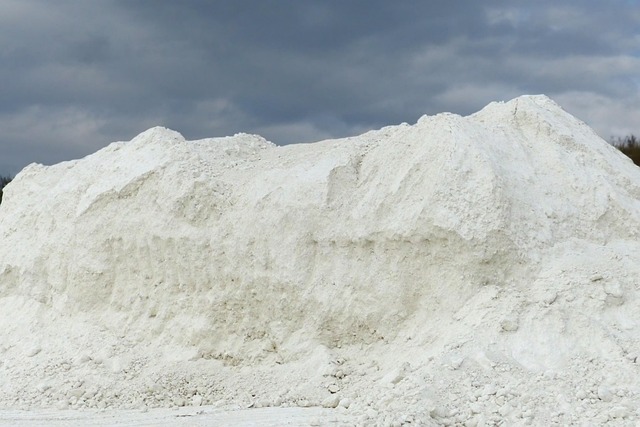
As computerization advances in the automotive industry, particularly in areas like car paint repair and auto collision repair, the management of paint databases becomes increasingly vital for achieving accurate computerized paint matching. Best practices involve maintaining comprehensive data with high-quality images, detailed color specifications, and up-to-date information on various vehicle models and paint formulas. Regular updates and standardization are essential to ensure consistency across different systems, facilitating seamless integration during the vehicle body repair process.
Future trends suggest enhanced use of artificial intelligence (AI) in paint database management, aiming to improve computerized paint matching accuracy even further. AI algorithms can analyze vast datasets more efficiently, learning from variations in color appearance under different lighting conditions and environmental factors. This technology promises to streamline operations in auto collision repair, making the process faster, more precise, and potentially reducing costs. By leveraging these innovations, professionals in vehicle body repair can anticipate even higher levels of accuracy and reliability in their paint matching efforts.
Paint databases play a pivotal role in enhancing the accuracy of computerized paint matching systems. By centralizing and organizing vast amounts of paint color data, these databases enable more precise comparisons, leading to improved matching algorithms. The benefits are clear: faster processing times, reduced human error, and enhanced customer satisfaction through exact color matches. As technology advances, best practices in database management will continue to evolve, ensuring even greater accuracy and efficiency in the computerized paint matching process.



